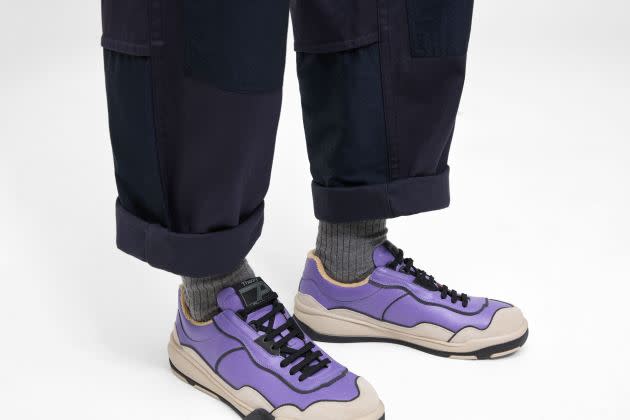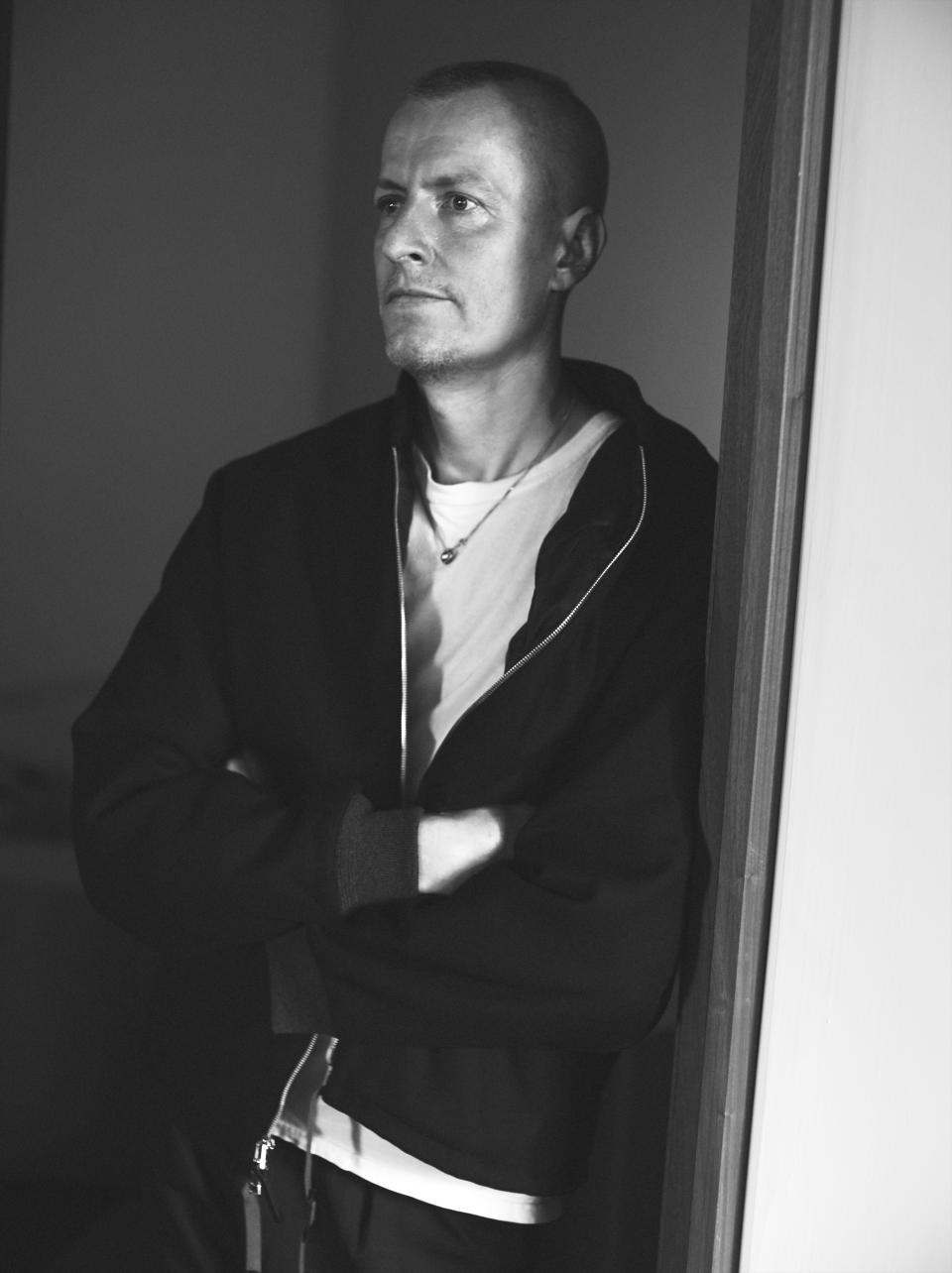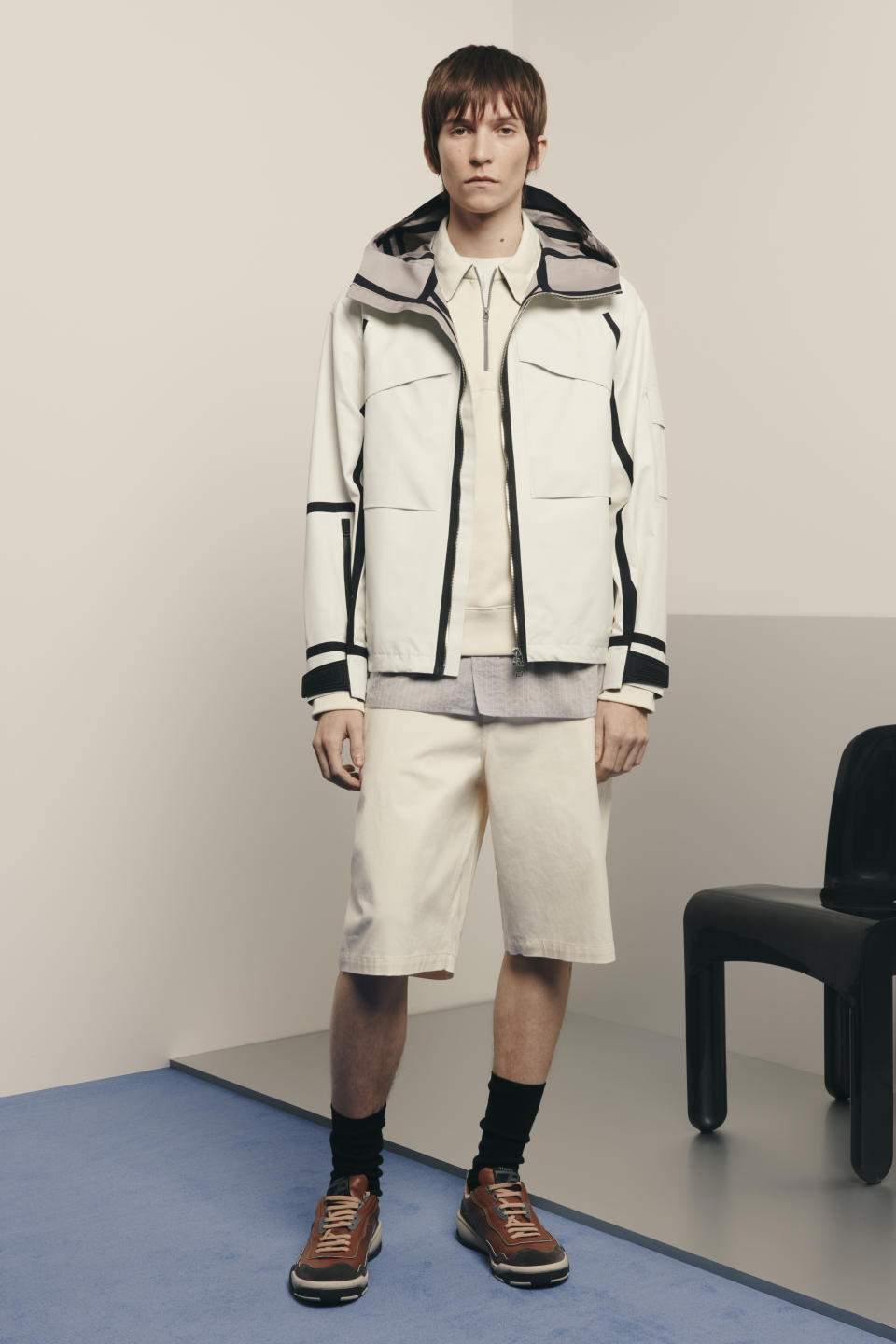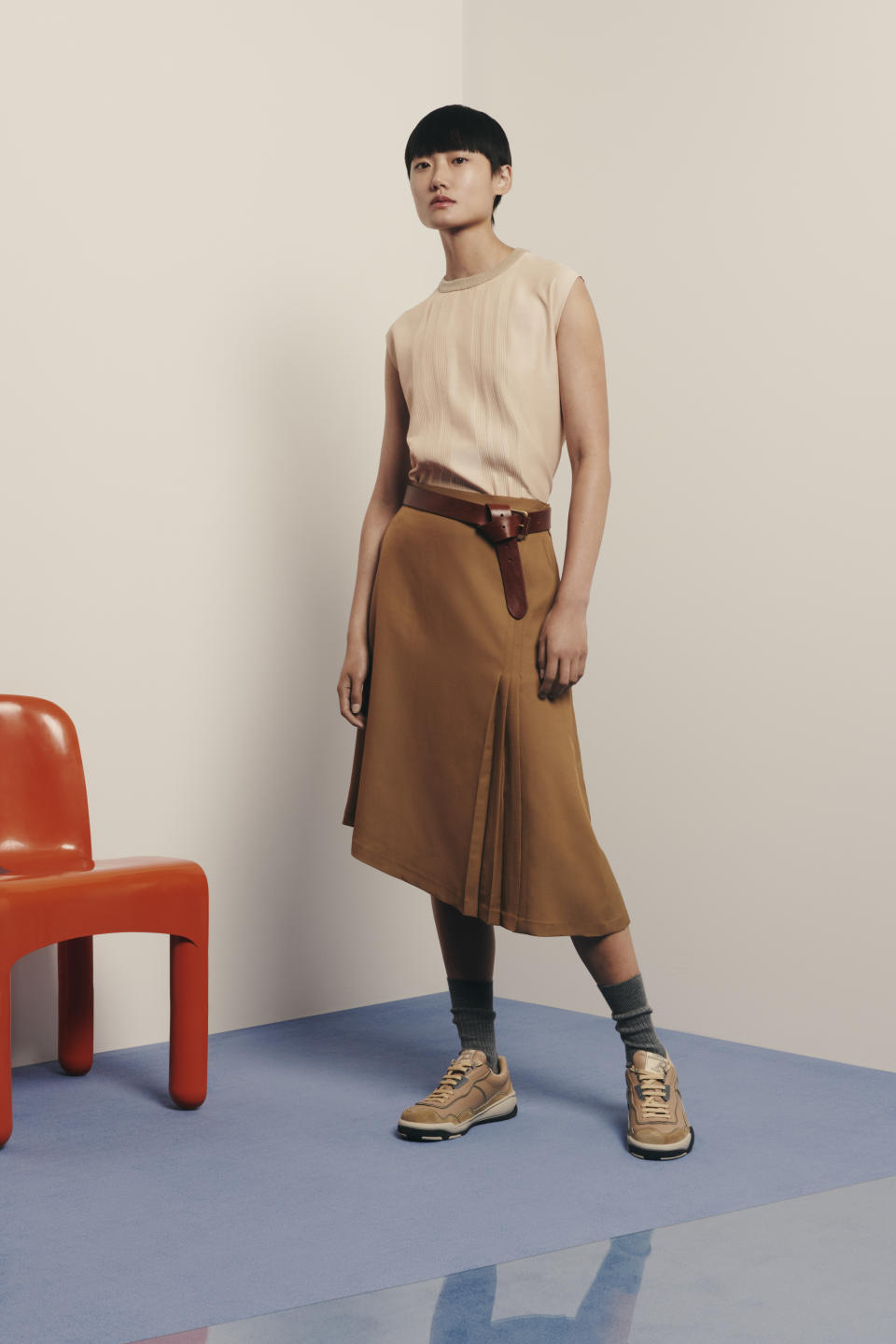Catching Up With Theory Project’s Lucas Ossendrijver

Transitioning from a luxury European brand to a more commercial American label has been a learning experience for Lucas Ossendrijver — one that he’s embraced with gusto.
Since being tapped by Theory in the summer of 2021 to design Theory Project, men’s and women’s capsule collections, Ossendrijver has immersed himself in the aesthetic of the New York-based brand. And while Theory and Lanvin, where he spent 14 years as director of menswear, operate completely differently, Ossendrijver believes he has found a formula to successfully bridge the two worlds.
More from WWD
“It’s a different way of working,” the designer said from his studio in Paris. “The client and the scale are different. Theory is part of a big company and I now work a year in advance rather than four months, so the development cycle is much longer. But I feel I’m in a good place.” Theory is part of Japan’s Fast Retailing, which also owns Uniqlo. Theory Project also marks the first time he has designed womenswear.

Ossendrijver said he uses the experience he gained working in Europe to elevate the Theory product while still making sure it is “accessible and democratic.”
“It has to be wearable and understandable and at a good price,” he said, adding: “It just feels more relevant today to work on real product rather than just something for a runway show.” Prices for Theory Project range from $195 to $1,195.

Ossendrijver also drew from his experience at Lanvin to create his first sneaker for Theory. The designer, who is credited with ushering in the high-fashion sneaker trend during his time at his former job, worked on the design of the Theory sneaker for more than a year, he said, and drew inspiration from what people wore on the streets.
The shoes, which are reminiscent of the popular style he created for Lanvin, are for both men and women and offered in a range of colors, from lilac to cognac. They feature a rounded toe and wavy lines tipped with reflective materials. They’re made in Portugal of napa leather and suede and finished with rubberized soles to withstand the rigors of city streets.
“We wanted a unisex design that is elevated yet easy to wear,” he said. “They’re quite rich and constructed beautifully.”
He said when he makes his regular visits to New York, he sees that “everyone wears sneakers everywhere,” and he wants Theory to get a piece of the action. “They have a very distinct shape that can be dressed up or down,” he said. The sneaker retails for $365.
Ossendrijver said the plan for the sneakers going forward is not to expand too far beyond what was introduced this spring. “I don’t want to be pushed to do a new silhouette every season,” he said. “I want it to be very concise. But next season, we will have shoes and build accessories,” he revealed. “There are a lot of possibilities as long as you remain true to your identity.”
As far as the apparel is concerned, Theory Project’s spring 2023 collection was just released and Ossendrijver worked to capture the energy of New York by using fluid fabrics, utilitarian details and kinetic prints in pieces designed to be layered.
“I think about the client and what they will do with it,” he said. “It starts from a different point because we’re not pushing for a show but rather to create something that lasts.”
Since his Theory collections have hit the market, he said the casual jackets, which he described as “sporty, but not sportswear,” have been among the bestselling items, along with a blouson from the first collection and a shirt-jacket in lightweight nylon from the second. Pants for both men and women have also proven popular.

He pointed to a bonded cotton black-and-white check jacket with a Gore-Tex interior, in a parka style for men and a cropped bomber silhouette for women, as another standout piece.
But with all the designs he creates for Theory Project, Ossendrijver is careful not to push things too far.
“I’ve learned to be very rigorous and go for one clear, easily understandable message,” he said, pointing to the large scale of the Theory collection. “When you think of basics, it’s like an archetype but I want to show you can have an identity that is basic but with a twist that is slightly different. It’s super hard to do. I’ve found that it’s easy to go to the extreme, but hard to be in the middle without being mediocre.”
Best of WWD

